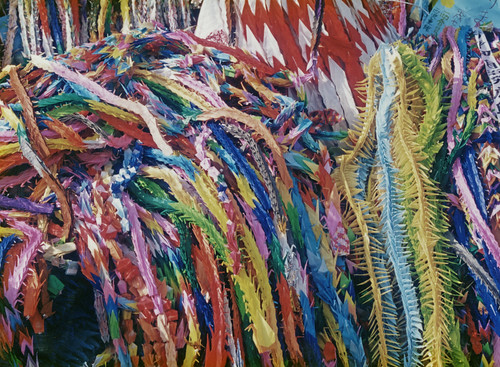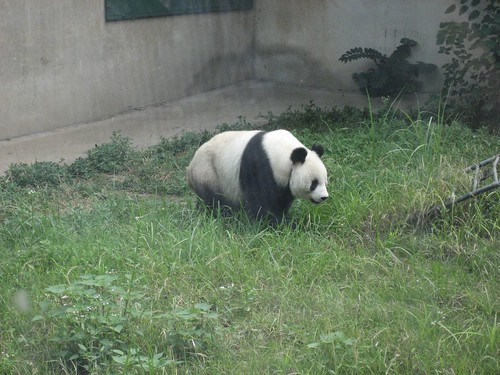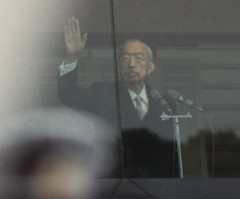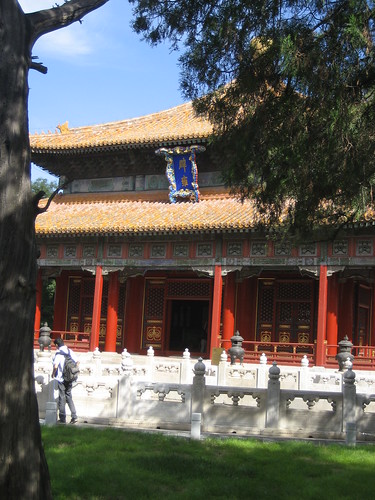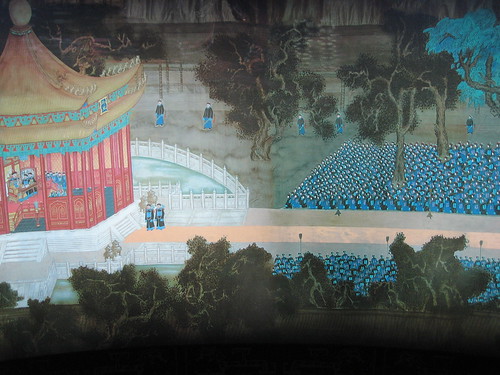Chinese museums are one of the best places to look at the changing interpretation of historical figures and events. Last weekend I went to Famen temple outside Xian. This was a fairly major temple in the Tang, being much visited by emperors, but by the Song they were supporting themselves by offering baths in a pool that seated up to 1000 and holding tea parties. The main pagoda was rebuilt in the early Ming, but the place seems to have declined a lot by then.
That all changed in 1981,when half of the Ming pagoda collapsed.
When digging out the foundation to re-build the pagoda they found the relic the temple was originally built around, a bone of the Buddha, inside a series of ornate caskets and accompanied by a bunch of other neat stuff. It is a really magnificent find, and it was nice to see some of these things in person.

Of course this changed the temple’s position in the Buddhist world radically. In addition to re-building the pagoda a huge new Buddhist center was built next to it. You need a better camera than mine to do it justice. You come in through a massive golden gateway, which makes you expect to see Cecil B. DeMille around somewhere.

It is a long walk to the main hall, and most people take the trolley. You whiz past a series of 3-story tall golden fiberglass1 Buddhas that represent the different sects of world Buddhism, and get to the main hall, which is in the shape of a pair of praying hands, and was designed by a Taiwanese architect. I suspect a lot of Taiwanese and Japanese money went into this place. They bought out an entire village to get the land, and the villagers mostly work in the temple cleaning up or whatever. The one I talked to got 600 yuan and 3 days off a month. The place is not entirely finished yet, and when it is done there will be a Buddhist retreat center and they hope to rival the Terracotta Warriors as the biggest tourist draw in the province.

What really interested me, of course, were the relics and the museum. The presentation was a little schizophrenic, perhaps because current policy is a little schizophrenic. On the one hand China is still officially more or less atheist. On the other hand, Buddhism is part of China’s 5000 glorious years of glorious culture. How to deal with this?
Not all the relics were there, but those that were were mostly presented as examples of the exquisite craftsmanship and high technology of China. There is also a fair amount about Buddhism. In discussing the Tang emperor’s worship of the bone the text mentions that it had the beneficial effects of solidifying state power, (always an unalloyed good), 凝聚人心 (which they translate as “increasing the cohesive force of the Chinese nation”) and spreading culture. On the other hand it also led to a great waste of society’s resources, and also increased the people’s religious fanaticism. These critiques sound eerily similar to Han Yu’s criticism of the finger bone when it was first brought to Chang-an. As a good Neo-Confucian Han Yu thought Buddhism complete nonsense that deluded the people
Of course Han Yu was not reckoning with the power of the tourist dollar, and he also had a somewhat different view of what is worth preserving in Chinese culture than the current government does. The Nationalist general who restored the temple in 1939 is praised in the exhibit, as is the monk who burned himself to death to protect it during the Cultural Revolution. The monk probably had a religious view of the place, and the general a cultural one. The latter seems more of a fit with the current interpretation. There is, of course, an inscription by Jiang Zemin, done when he came here in 1993. He encourages them to use the cultural relics that have been unearthed to expand Chinese culture and strengthen the spirit of patriotism. Apparently as long as religion is subsumed in culture and culture is put in the service of the nation, the Buddha is just alright.







